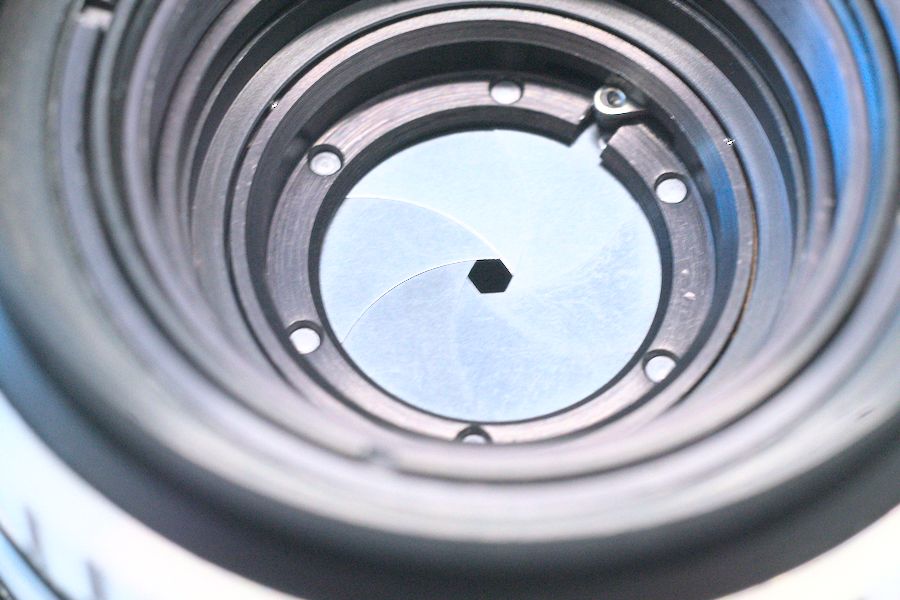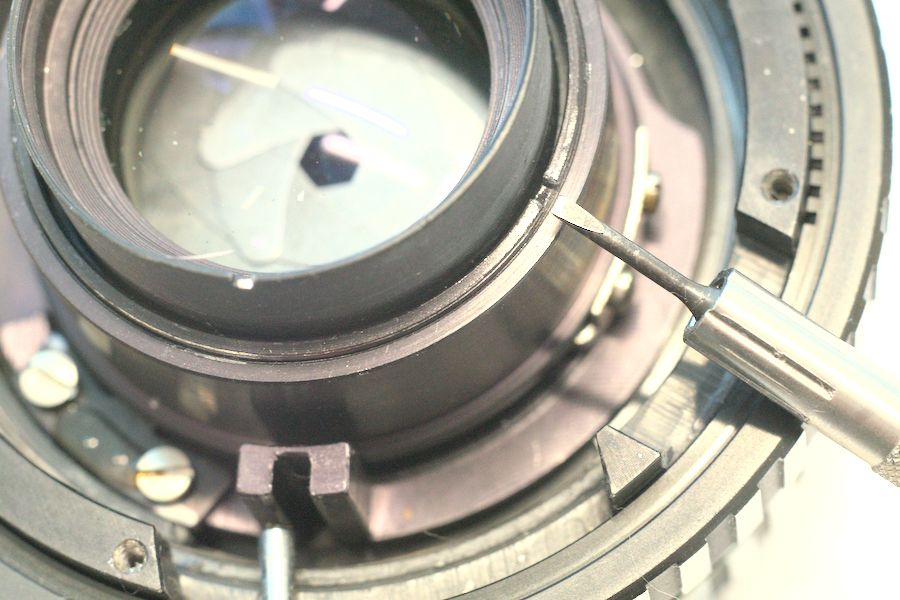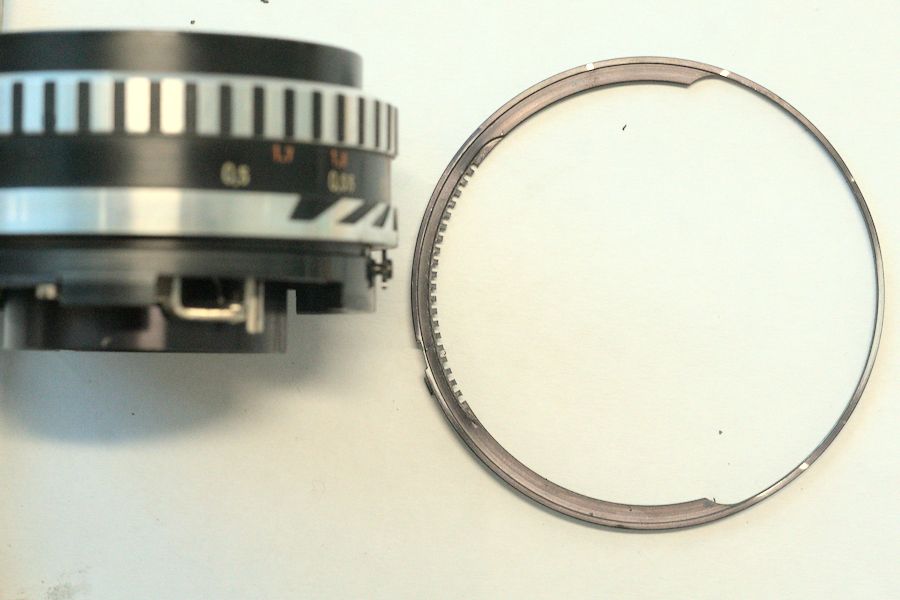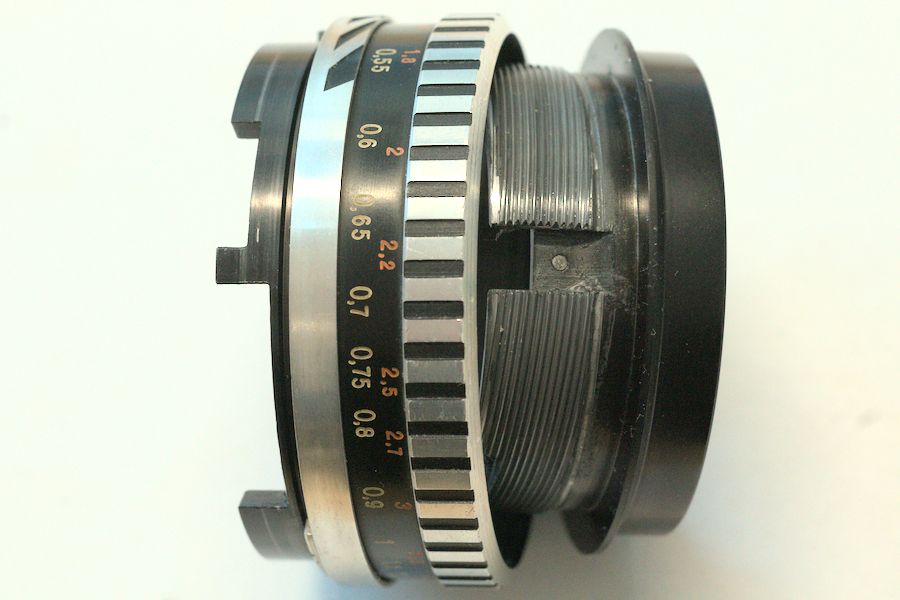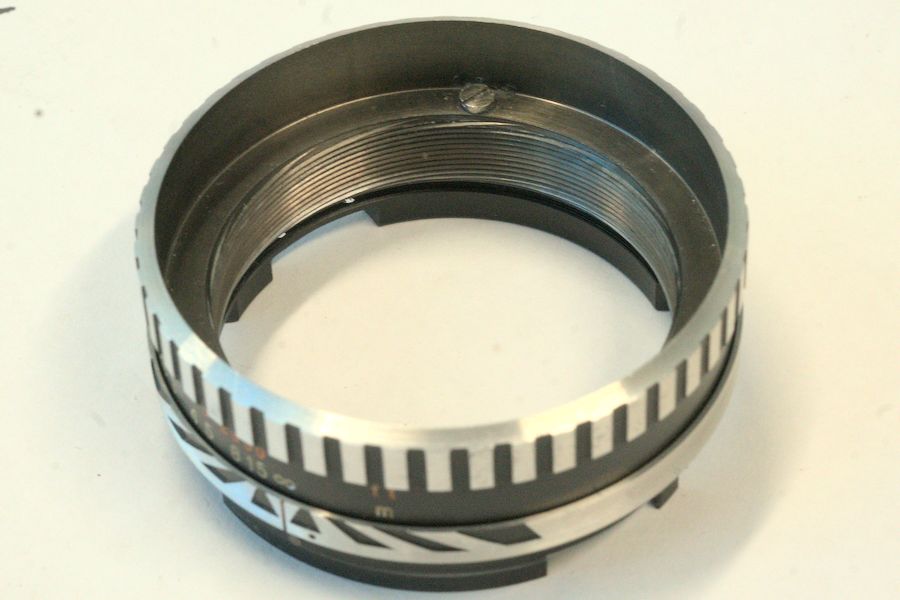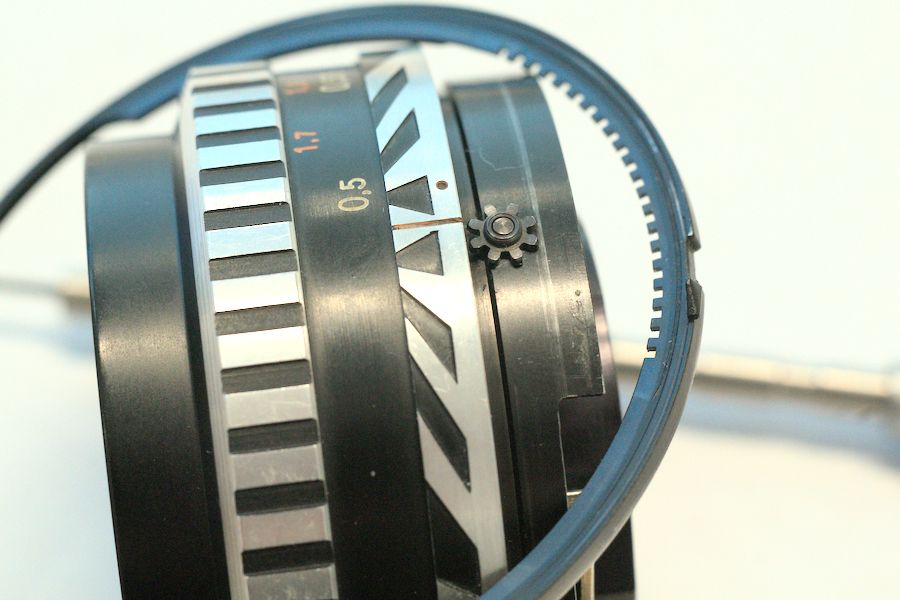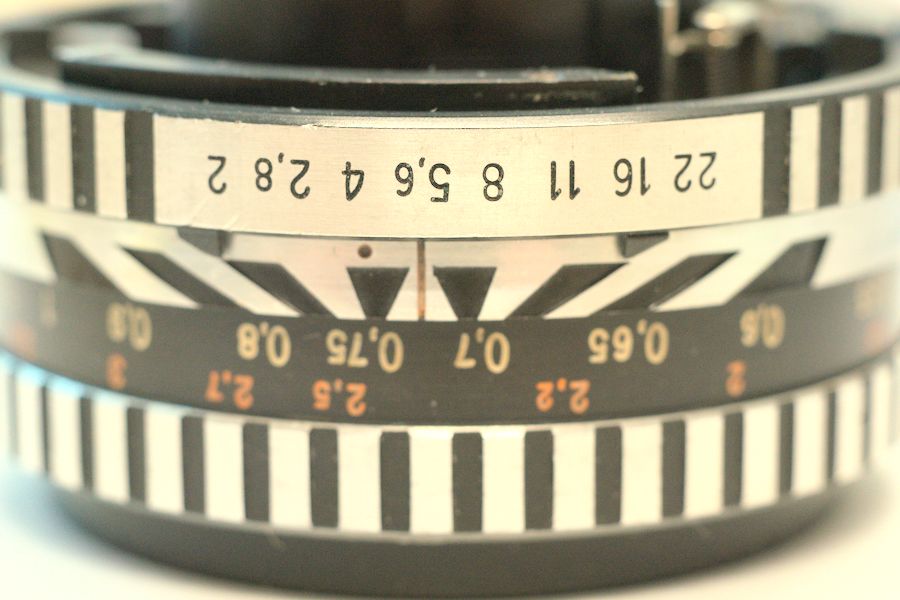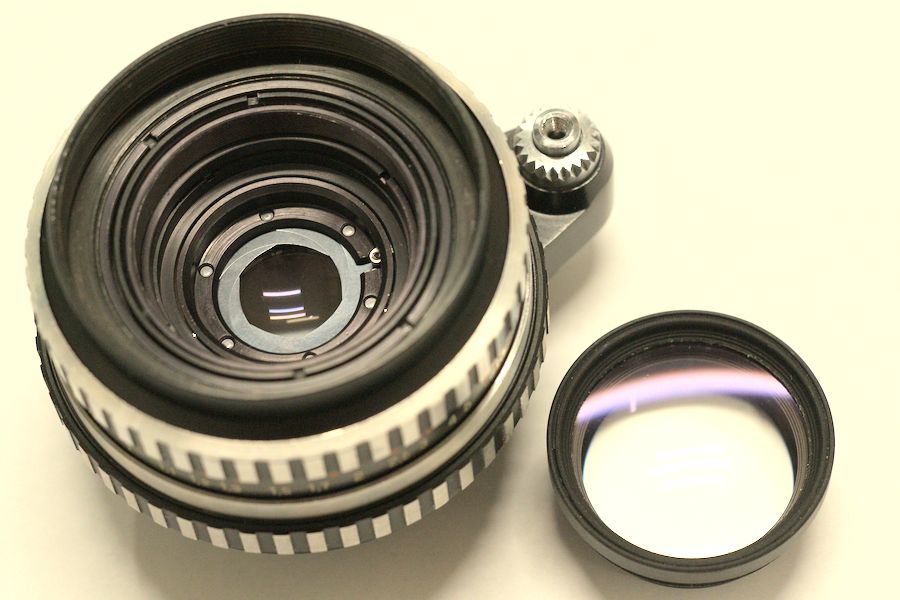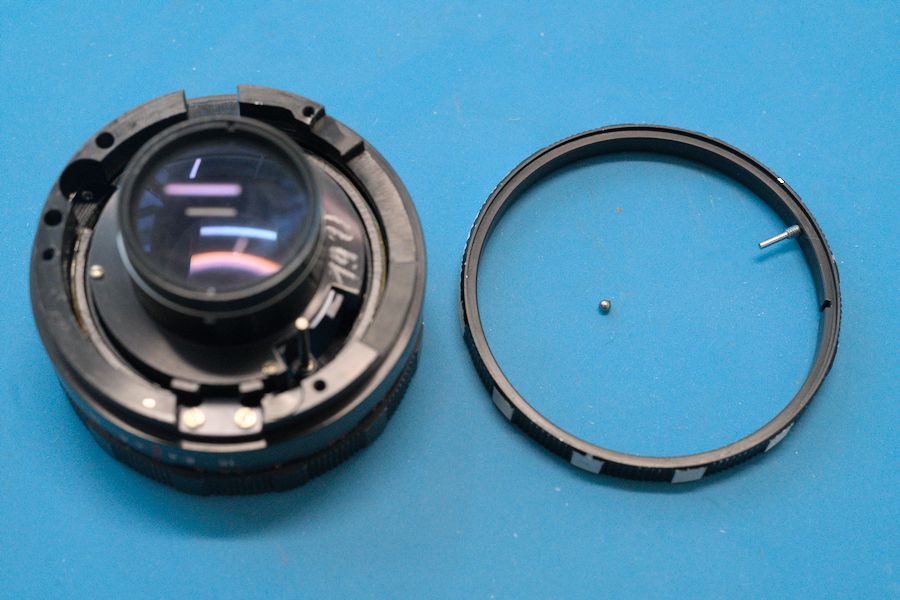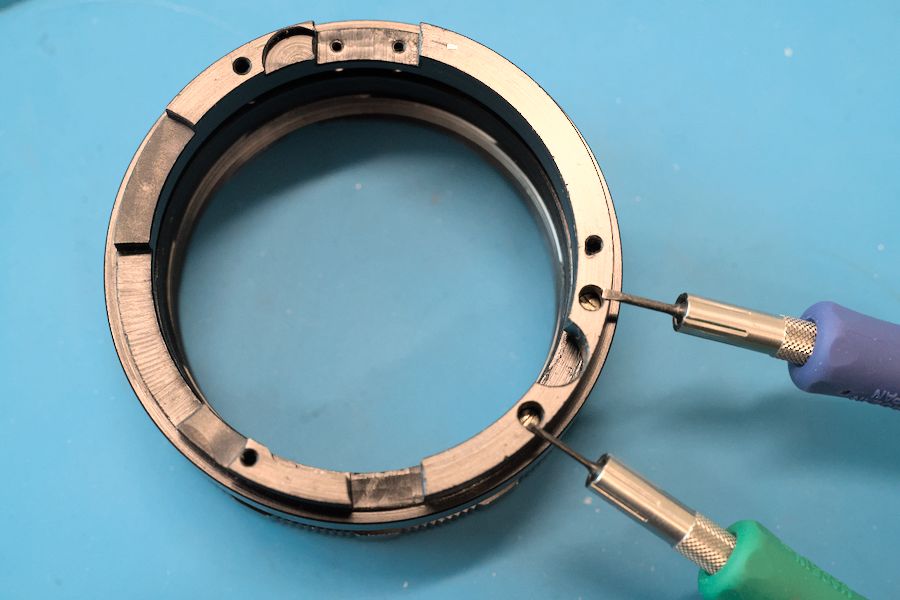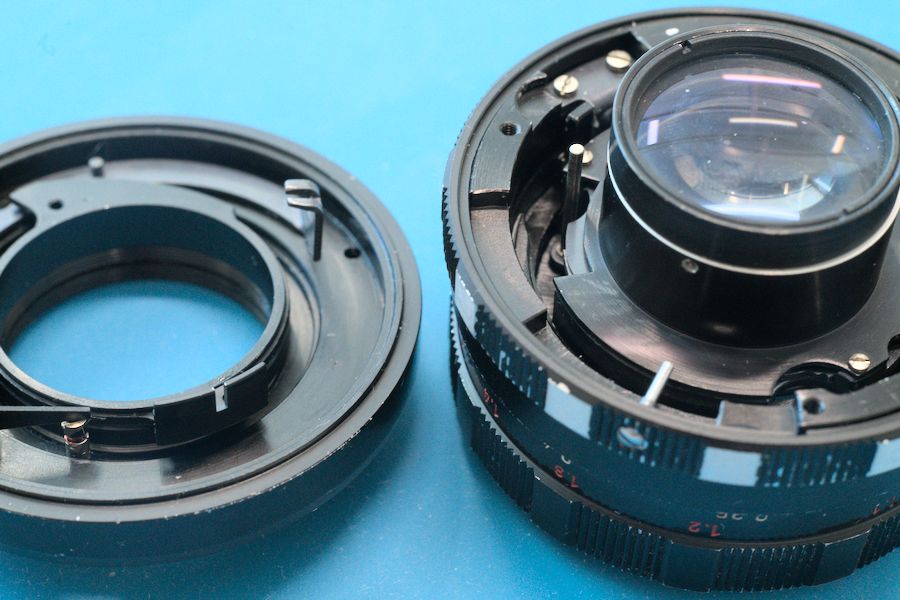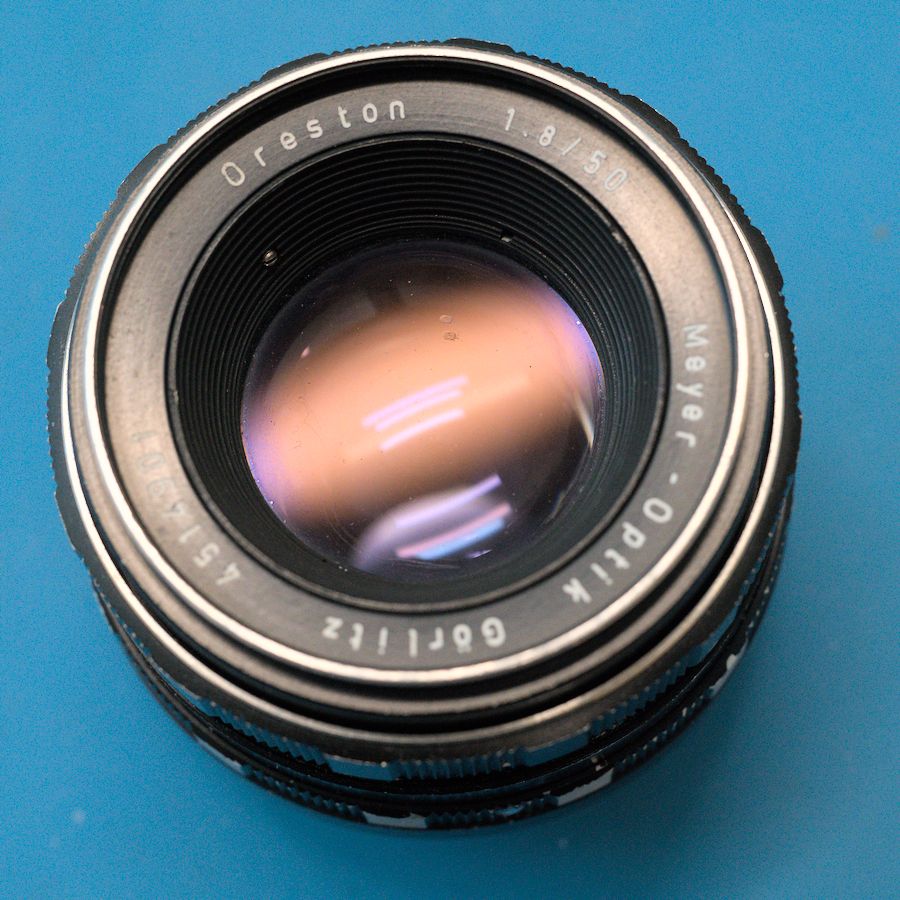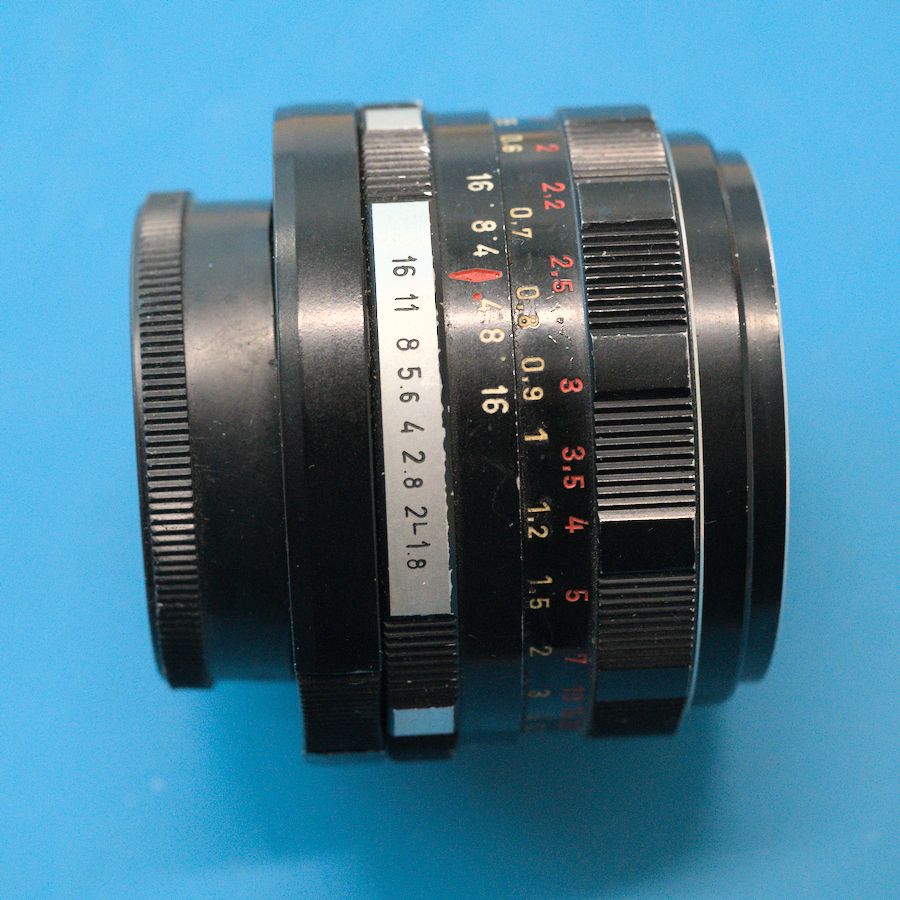The Carl Zeiss Jena Pancolar 50mm f/1.8 is a legendary lens, famous for its color rendering and for its sharpness, wide open. It features a double Gauss design with 6 elements in 5 groups. But this article is about the earlier version with f/2. It was announced in 1960 as an improvement of the equally legendary Carl Zeiss Jena Biotar 58mm f/2 (the one that was cloned in Russia as the "Helios 58mm f/2) which increases the diagonal angle of view from 40 to 46 degrees. It featured 6 elements in 4 groups and uses lanthanum flint glass. There exist different versions of this lens, the earlier ones had a focus ring with rubber, while the later ones were in the "Zebra" style. A very detailed description of the development of this lens can be found
on this incredible web page (in German, but Google will translate it).
My piece was made between 1967-70, it is the "Zebra" version with Exakta mount. It came with super stiff focus and aperture, but I knew that those would be very easy to fix - and it turned out that it was even easier than I expected.
General Recommendations
First, you need tools like a lens spanner and (good!) screw drivers. For cleaning the metal surfaces, I am using cotton swabs and high percentage Isopropyl Alcohol (I got 91%) for all metal surfaces and the glass - and lighter fluid (Zippo) for cleaning the old grease in the helicoids). You also need helicoid grease.
I strongly recommend to take photos of every single step along the way. Whenever I take off a piece, I first try to understand how it was connected and what it did, and then I clean immediately all of its accessible surfaces with alcohol-soaked cotton swabs.
Disassembly
I tried to document the whole process in great detail through the pictures below.
Starting from the front side.

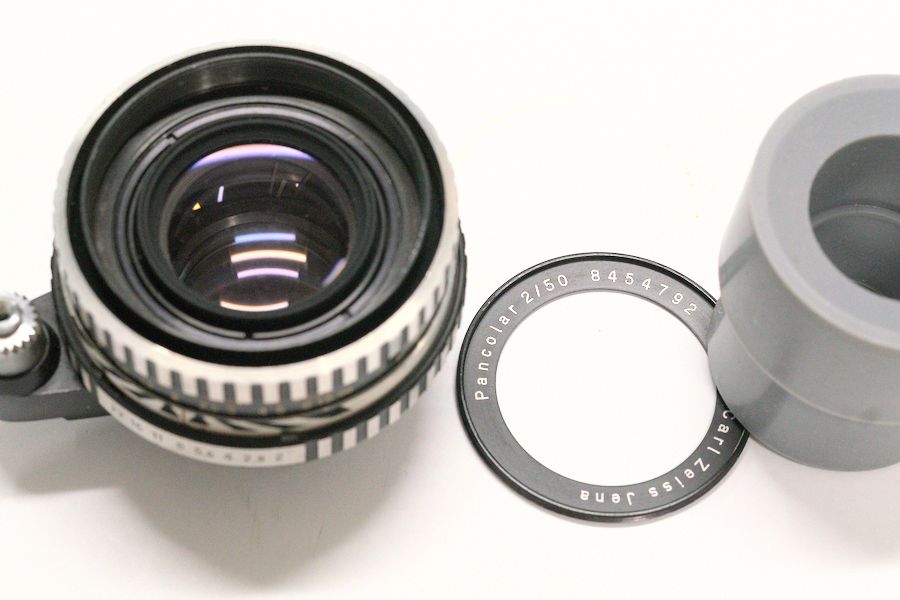
At this point, you already have access to the aperture blades.
At this stage I had some trouble since two of the four screws didn't want to come out. But I soaked them in alcohol and lighter fluid and waited a few days. Suddenly the third screw came out... and two days later the last one too. (Sometimes it pays off to be patient!)
My lens spanner had the wrong angle to get into this slot. But I was able to get the ring out using two screwdrivers.
With the ring removed, you can extract the rear glass piece - and with a lens spanner you can take out the last element.

When the aperture ring is removed you can see the little gear that moves the ring with the depth-of-field pointer.
This ring is rather thin. Be careful not to bend it when removing it.
Before removing the gear: remember exactly in which orientation it was sitting there - take a photo (and/or look closely on my photo above).
Back to the front side. First take out the piece with the aperture - and then the focusing helicoids.





Now is a good time to clean the aperture blades. I was able to do so, without further disassembly of the aperture.

Take out the helicoid key (and, before you do so, make sure to set the focus to a defined value - e.g. to the minimum focus distance).
While holding the focus ring fixed extract the inner helicoid (slowly!) and make sure you note where exactly it exits. Mine did so when the slot for the helicoid key was exactly at the red 2.2ft mark (see picture).
At this point, I rotate the focus ring to infinity - then I remove the screw (at the top in the picture) that sets the limits for the focus. Now, I first check how much further the focus ring can be inserted before it comes to a stop: In my case I can rotate it beyond infinity by 1 1/4 turns. Then I bring it back to the original infinity setting. From there, it takes 6 1/4 turns before it comes out. For your lens, this may be different - so, make sure to take pictures, sketches, and notes!

Everything is disassembled and cleaned!
Just three little 'drops' (much less than a water droplet!) for the outer helicoid (= the focus ring). Of course, the exact amount depends on the type of grease.
When the focus ring is in the correct position, put back the limit-screw. Then the inner helicoid can be greased and inserted.
Putting back the helicoid key,
the aperture piece,
the gear and the ring with the d.o.f. pointer,
and the aperture ring.
All glass surfaces are cleaned.
Suddenly, these two pieces cam out. It turns out that (unlike almost any other lens that I ever encountered) the clicked aperture ring is not using a ball, but this pin and the metal piece as a spring. The latter has to be inserted into the grove of the aperture ring.
And that's it! A wonderful lens is back in great shape!
Images
Here are a few impressions of my first shots that I took with this lens on a Sony A7Rii. Some are wide open, some at f/5.6.
I really like the rendering of the out-of-focus regions.
More of my lens repair tutorials can be found here.






